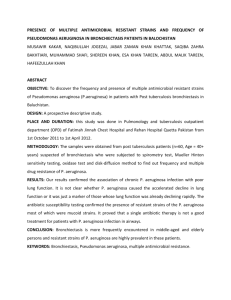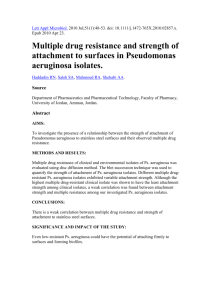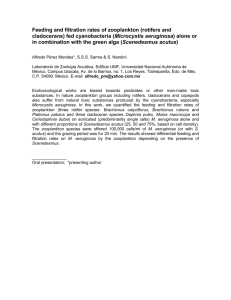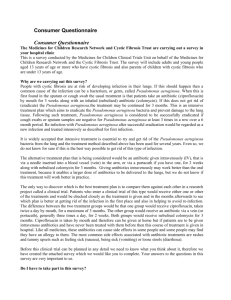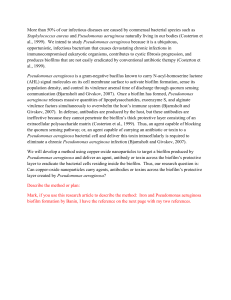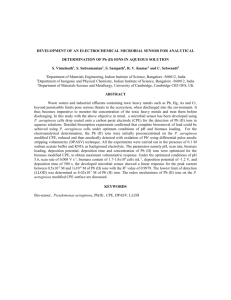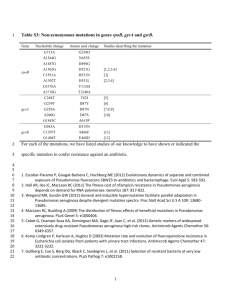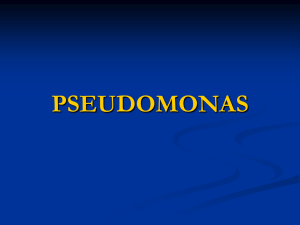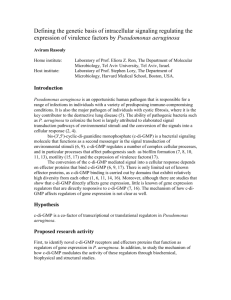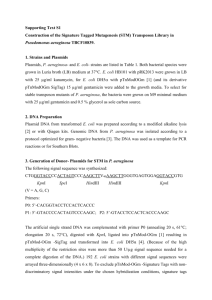Gene expression by Pseudomonas aeruginosa during intrinsic and
advertisement
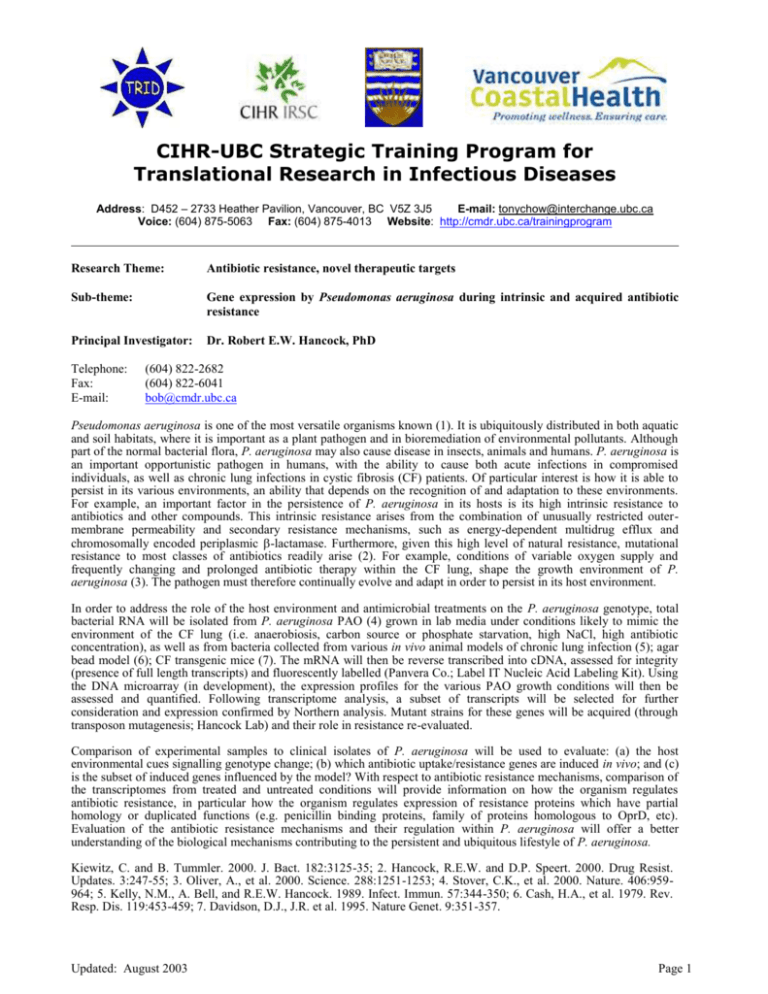
CIHR-UBC Strategic Training Program for Translational Research in Infectious Diseases Address: D452 – 2733 Heather Pavilion, Vancouver, BC V5Z 3J5 E-mail: tonychow@interchange.ubc.ca Voice: (604) 875-5063 Fax: (604) 875-4013 Website: http://cmdr.ubc.ca/trainingprogram Research Theme: Antibiotic resistance, novel therapeutic targets Sub-theme: Gene expression by Pseudomonas aeruginosa during intrinsic and acquired antibiotic resistance Principal Investigator: Dr. Robert E.W. Hancock, PhD Telephone: Fax: E-mail: (604) 822-2682 (604) 822-6041 bob@cmdr.ubc.ca Pseudomonas aeruginosa is one of the most versatile organisms known (1). It is ubiquitously distributed in both aquatic and soil habitats, where it is important as a plant pathogen and in bioremediation of environmental pollutants. Although part of the normal bacterial flora, P. aeruginosa may also cause disease in insects, animals and humans. P. aeruginosa is an important opportunistic pathogen in humans, with the ability to cause both acute infections in compromised individuals, as well as chronic lung infections in cystic fibrosis (CF) patients. Of particular interest is how it is able to persist in its various environments, an ability that depends on the recognition of and adaptation to these environments. For example, an important factor in the persistence of P. aeruginosa in its hosts is its high intrinsic resistance to antibiotics and other compounds. This intrinsic resistance arises from the combination of unusually restricted outermembrane permeability and secondary resistance mechanisms, such as energy-dependent multidrug efflux and chromosomally encoded periplasmic -lactamase. Furthermore, given this high level of natural resistance, mutational resistance to most classes of antibiotics readily arise (2). For example, conditions of variable oxygen supply and frequently changing and prolonged antibiotic therapy within the CF lung, shape the growth environment of P. aeruginosa (3). The pathogen must therefore continually evolve and adapt in order to persist in its host environment. In order to address the role of the host environment and antimicrobial treatments on the P. aeruginosa genotype, total bacterial RNA will be isolated from P. aeruginosa PAO (4) grown in lab media under conditions likely to mimic the environment of the CF lung (i.e. anaerobiosis, carbon source or phosphate starvation, high NaCl, high antibiotic concentration), as well as from bacteria collected from various in vivo animal models of chronic lung infection (5); agar bead model (6); CF transgenic mice (7). The mRNA will then be reverse transcribed into cDNA, assessed for integrity (presence of full length transcripts) and fluorescently labelled (Panvera Co.; Label IT Nucleic Acid Labeling Kit). Using the DNA microarray (in development), the expression profiles for the various PAO growth conditions will then be assessed and quantified. Following transcriptome analysis, a subset of transcripts will be selected for further consideration and expression confirmed by Northern analysis. Mutant strains for these genes will be acquired (through transposon mutagenesis; Hancock Lab) and their role in resistance re-evaluated. Comparison of experimental samples to clinical isolates of P. aeruginosa will be used to evaluate: (a) the host environmental cues signalling genotype change; (b) which antibiotic uptake/resistance genes are induced in vivo; and (c) is the subset of induced genes influenced by the model? With respect to antibiotic resistance mechanisms, comparison of the transcriptomes from treated and untreated conditions will provide information on how the organism regulates antibiotic resistance, in particular how the organism regulates expression of resistance proteins which have partial homology or duplicated functions (e.g. penicillin binding proteins, family of proteins homologous to OprD, etc). Evaluation of the antibiotic resistance mechanisms and their regulation within P. aeruginosa will offer a better understanding of the biological mechanisms contributing to the persistent and ubiquitous lifestyle of P. aeruginosa. Kiewitz, C. and B. Tummler. 2000. J. Bact. 182:3125-35; 2. Hancock, R.E.W. and D.P. Speert. 2000. Drug Resist. Updates. 3:247-55; 3. Oliver, A., et al. 2000. Science. 288:1251-1253; 4. Stover, C.K., et al. 2000. Nature. 406:959964; 5. Kelly, N.M., A. Bell, and R.E.W. Hancock. 1989. Infect. Immun. 57:344-350; 6. Cash, H.A., et al. 1979. Rev. Resp. Dis. 119:453-459; 7. Davidson, D.J., J.R. et al. 1995. Nature Genet. 9:351-357. Updated: August 2003 Page 1
